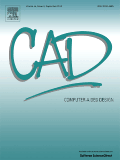
COMPUTER-AIDED DESIGN
Scope & Guideline
Advancing Innovation in Design and Engineering
Introduction
Aims and Scopes
- Computational Design and Modeling:
The journal covers methodologies for computational design, including algorithms for geometric modeling, mesh generation, and surface reconstruction, which are essential for modern CAD systems. - Topology Optimization:
A significant focus is on topology optimization techniques that enhance structural performance while minimizing material usage, integrating computational methods with engineering design. - Additive Manufacturing and Fabrication:
Research on design methodologies that facilitate additive manufacturing processes, including the generation of optimal tool paths and support structures for complex geometries. - Machine Learning Applications:
The journal features studies on the application of machine learning techniques to improve design processes, such as feature recognition, shape optimization, and predictive modeling. - Geometric and Structural Analysis:
Papers often explore geometric properties and structural integrity through advanced computational algorithms, including finite element analysis and isogeometric analysis. - Interactive Visualization and User Interfaces:
The journal includes research on interactive design tools and visualization techniques that enhance user experience and facilitate intuitive design processes.
Trending and Emerging
- Integration of AI and Machine Learning:
Recent publications increasingly focus on the integration of artificial intelligence and machine learning into design processes, offering novel solutions for optimization, predictive modeling, and automation in CAD. - Advanced Topology Optimization Techniques:
There is a growing trend towards advanced topology optimization methods, particularly those that incorporate multi-material and multi-objective optimization strategies to enhance performance and sustainability. - Parametric and Generative Design:
Emerging themes emphasize parametric and generative design methodologies, which leverage algorithms to explore design spaces and produce complex geometries that were previously unattainable. - Digital Fabrication Techniques:
Research on digital fabrication methods, particularly related to additive manufacturing, is gaining traction, with a focus on the design of structures that can be efficiently fabricated. - Real-time Simulation and Interaction:
There is an increasing interest in real-time simulation tools that allow for interactive design processes, enhancing user engagement and decision-making in design workflows. - Sustainable Design Practices:
An emerging focus on sustainability in design practices is evident, with research exploring eco-friendly materials and energy-efficient design methodologies.
Declining or Waning
- Traditional CAD Methods:
There has been a noticeable decline in papers focused on traditional CAD methods, as the field shifts towards more computationally intensive and innovative design approaches that leverage new technologies. - 2D Geometric Modeling:
Research centered on 2D geometric modeling techniques has decreased, reflecting a growing emphasis on three-dimensional modeling and complex geometrical structures. - Basic Mesh Generation Techniques:
Basic mesh generation methods are seeing reduced publication frequency, as more advanced and adaptive techniques become the focus of research efforts. - Manual Design Techniques:
Papers that emphasize manual design processes or conventional drafting techniques have waned, indicating a shift towards automation and computational design solutions. - Static Structural Analysis:
There is a declining interest in static structural analysis methods, with more emphasis being placed on dynamic and complex simulations that consider real-world variability and material behaviors.
Similar Journals

Modelling is a distinguished open access journal published by MDPI since 2020, dedicated to advancing the field of computational modeling across various scientific disciplines including Computer Science, Engineering, and Mathematics. With its base in Switzerland, the journal aims to foster a collaborative environment for researchers and practitioners while providing a platform for high-quality research on modeling and simulation techniques. As of 2023, it has garnered respectable rankings, achieving Q3 in Computer Science and Mathematics, and Q2 in Engineering, with notable Scopus values indicating an increasing impact within the academic community. Modelling not only publishes innovative research findings but also encourages the dissemination and discussion of emerging methodologies, making it a vital resource for scholars seeking to contribute to and expand the frontiers of knowledge in their respective fields. As an open access journal, it promotes unrestricted access to research outputs, ensuring greater visibility and impact for researchers and students alike.

World Journal of Engineering
Advancing Engineering Knowledge GloballyWorld Journal of Engineering, published by EMERALD GROUP PUBLISHING LTD, stands as a premier platform for disseminating high-quality research across various engineering disciplines. Since its inception in 2014, the journal has built a reputation for its rigorous peer-review process and commitment to advancing knowledge in the fields of Civil and Structural Engineering, Electrical and Electronic Engineering, Geotechnical Engineering, Mechanical Engineering, and Mechanics of Materials. With its categorization in the Q3 quartile across multiple engineering domains and notable Scopus rankings, the journal positions itself as a valuable resource for researchers, professionals, and students seeking to stay abreast of innovations and critical developments in engineering. While the journal currently operates under a subscription model, its comprehensive scope ensures that it remains a vital reference point for contemporary engineering challenges and solutions throughout the United Kingdom and beyond.
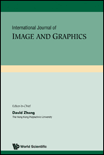
International Journal of Image and Graphics
Fostering Creativity Through Cutting-Edge Graphics ResearchInternational Journal of Image and Graphics, published by World Scientific Publishing Co. Pte Ltd, serves as an essential platform for scholars and practitioners in the realms of Computer Graphics, Computer-Aided Design, and Computer Vision and Pattern Recognition. Established in 2001 and based in Singapore, this journal has become increasingly influential, with a reputation reflected in its Q3 and Q4 rankings across key categories in Scopus, highlighting its growing impact in the academic community. Open access options remain limited; however, the journal's commitment to disseminating high-quality research allows for a rich exchange of ideas among professionals and students alike. As the 2023 metrics indicate, contributions to the journal not only enhance individual academic portfolios but also promote advancements in image processing, fostering innovation and growth within the discipline until at least 2024. It is thus a vital resource for anyone looking to deepen their knowledge and understanding of contemporary trends and technologies in image processing and related fields.

Advances in Computational Design, An International Journal
Bridging Theory and Practice in Computational DesignAdvances in Computational Design, an esteemed international journal published by TECHNO-PRESS, focuses on the dynamic intersection of computational mathematics, mechanics, and computer graphics. This journal provides a platform for researchers and practitioners alike to contribute to the rapidly advancing fields of computational design, fostering innovation in methodologies and applications. With a ranking placing it in the Q4 category for Computational Mathematics and in the Q3 categories for both Computational Mechanics and Computer Graphics, it is recognized for its impact within academic and professional circles. Given its launch in 2016, the journal has cultivated a significant community of scholars aiming to push the boundaries of computational techniques. The Scopus rankings demonstrate its visibility and relevance, with notable positions in key categories. Although the journal operates under a traditional subscription model, the rich array of research articles available through its platform continues to enrich scholarly dialogue and advance understanding in the field. For those pursuing cutting-edge developments in computational design and its applications, Advances in Computational Design serves as an invaluable resource.
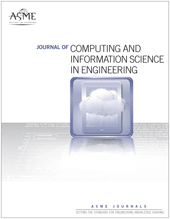
JOURNAL OF COMPUTING AND INFORMATION SCIENCE IN ENGINEERING
Pioneering Research in Computing and Engineering DisciplinesWelcome to the JOURNAL OF COMPUTING AND INFORMATION SCIENCE IN ENGINEERING, a premier publication from ASME that focuses on the dynamic intersection of computing and engineering disciplines. With an ISSN of 1530-9827 and E-ISSN 1944-7078, this journal serves as a critical platform for disseminating innovative research and advancements in areas such as Computer Graphics, Computer-Aided Design, Software Engineering, and Industrial Manufacturing. The journal spans from 2001 to 2024 and has been recognized for its excellence, boasting impressive Scopus rankings including Q1 in Industrial and Manufacturing Engineering and Q2 in both Computer Graphics and Computer Science Applications. It offers a unique opportunity for researchers, professionals, and students to engage with high-impact studies and present their contributions to a diverse audience. As a member of the esteemed ASME family, this journal promotes open dialogue and fosters the growth of knowledge in technical fields, while emphasizing practical applications and interdisciplinary collaboration. Join us in exploring the forefront of computing and engineering through rigorous research and insightful articles that drive innovation and progress.
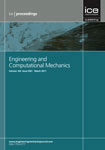
Proceedings of the Institution of Civil Engineers-Engineering and Computational Mechanics
Advancing the Frontiers of Civil Engineering and MechanicsProceedings of the Institution of Civil Engineers - Engineering and Computational Mechanics is a prestigious journal published by Emerald Group Publishing Ltd, dedicated to advancing the fields of civil and structural engineering, as well as mechanics of materials. With an ISSN of 1755-0777 and E-ISSN 1755-0785, this journal serves as a critical platform for disseminating innovative research and practical insights from 2009 through 2024. As part of its commitment to academic rigor, it is categorized in the Q4 quartile for both civil and structural engineering and mechanics of materials, reflecting a unique position in the scholarly community. The journal is essential for professionals, researchers, and students aiming to stay informed on current trends, methodologies, and applications in engineering and computational mechanics. By engaging with this publication, readers gain access to crucial findings that contribute to the advancement of infrastructure and materials science, vital for developing resilient and sustainable engineering solutions.

Computational Visual Media
Advancing innovation in visual computation.Computational Visual Media, published by TSINGHUA UNIVERSITY PRESS, is a premier open access journal dedicated to advancing the fields of Artificial Intelligence, Computer Graphics and Computer-Aided Design, and Computer Vision and Pattern Recognition. Since its inception in 2015, it has established a robust position within the academic community, consistently achieving Q1 rankings across its categories as of 2023. With exceptional Scopus rankings, including a remarkable percentile standing in the top 10% globally, the journal serves as a vital resource for researchers, professionals, and students eager to explore cutting-edge methodologies and technologies in computational visual media. The journal’s open access format enhances accessibility, fostering global collaboration and dissemination of knowledge, making it an indispensable platform for those at the forefront of innovation in these dynamic fields. The journal is headquartered in Beijing, China, and aims to publish high-quality research that not only contributes to theoretical advancements but also addresses practical challenges within computational visual technologies.
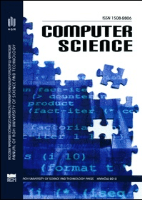
Computer Science-AGH
Empowering Researchers with Accessible InsightsComputer Science-AGH, published by the AGH University of Science & Technology Press in Poland, is an esteemed open access journal that has been disseminating high-quality research since 2004. With ISSN 1508-2806 and E-ISSN 2300-7036, this journal focuses on a diverse range of areas within the computer science discipline, including but not limited to Artificial Intelligence, Computational Theory, Computer Graphics, and Networks. While it currently holds a Q4 ranking across several categories as of 2023, it actively promotes research that contributes to the academic community's understanding and evolution in the field. The journal's commitment to open access ensures that vital research is accessible to a wider audience, fostering collaboration and innovation. With its comprehensive focus and strategic publication goals, Computer Science-AGH plays a crucial role in advancing the frontiers of computer science research and education, making it an invaluable resource for researchers, professionals, and students alike.
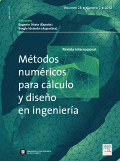
Revista Internacional de Metodos Numericos para Calculo y Diseno en Ingenieria
Connecting Scholars to Shape the Future of EngineeringRevista Internacional de Metodos Numericos para Calculo y Diseno en Ingenieria is a prominent academic journal dedicated to the dissemination of innovative research and methodologies in the fields of applied mathematics and engineering. Published by SCIPEDIA S L in Spain, this journal has been an essential resource for researchers since its inception in 1987, transitioning to an Open Access model in 2016 to enhance accessibility and foster collaboration among professionals and academics globally. Currently indexed in Scopus, it holds a Q4 category designation in both applied mathematics and miscellaneous engineering fields for 2023, reflecting its focus on advancing numerical methods to solve engineering problems. Despite ranking at the lower percentile, it serves as a vital platform for emerging scholars and practitioners aiming to contribute to cutting-edge developments in numerical techniques and engineering design. The journal's commitment to providing a forum for new ideas makes it an invaluable asset for students, researchers, and industry professionals seeking to stay abreast of advancements in the discipline.

THIN-WALLED STRUCTURES
Innovating Design for Safer, Efficient StructuresTHIN-WALLED STRUCTURES is a premier international journal published by Elsevier Science Ltd, focusing on the critical areas of Building and Construction, Civil and Structural Engineering, and Mechanical Engineering. With an impressive impact factor and categorization in the Q1 quartile of each respective field, this journal stands at the forefront of engineering research, boasting commendable Scopus rankings—52nd for Mechanical Engineering, 18th for Building and Construction, and 32nd for Civil and Structural Engineering. Since its inception in 1983, THIN-WALLED STRUCTURES has provided a vital platform for disseminating innovative research, practical applications, and theoretical advancements in thin-walled structures, encouraging the development of safer and more efficient design methodologies. Although it operates on a traditional access model, the journal is committed to maintaining high-quality peer review and publishing, making it an essential resource for researchers, professionals, and students aiming to contribute to and benefit from the latest advancements in this dynamic field.